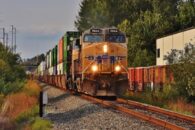
Mid-January finds the regulatory world getting busy again as the nation weathers fierce winter weather. The UNECE has a pair of very interesting published revisions to important documents; we cover that below, along with a variety of other actions. Meanwhile it’s the Rev. Dr. Martin Luther King Jr. holiday on Monday; the Labelmaster family wishes you a safe and valuable commemoration of this important Civil Rights icon. Here’s this week’s news:
PHMSA
The agency published an ICR related to design qualifications and testing of portable tanks and IBC’s. See the details of the information collection here
In a second action, the agency published its usual raft of Special Permit actions. As is typical, the SP’s deal mainly with cylinders, batteries, portable tanks, and requests for deviations from the regulations in order to ship a variety of materials which might not otherwise be authorized. See the actions at the links below:
https://www.govinfo.gov/content/pkg/FR-2020-01-16/pdf/2020-00606.pdf
https://www.govinfo.gov/content/pkg/FR-2020-01-16/pdf/2020-00605.pdf
https://protect-us.mimecast.com/s/re44C68Yv5HrYEBMSmYTJaf
FRA
The agency published a proposed rule that will alter the way in which federally mandated train brake inspections are carried on various types of operating equipment. FRA states that the proposal will lead to more effective inspections. See the details here
OSHA
The agency has published its revised civil penalty fee structure. The new rates take into account the annual adjustment for inflation. See the revisions here
U.S. DOT
The agency published a correction to its correction (!) of its revision of its procedural guide for Administrative Rulemaking and Enforcement. The guide lays out the structure for how DOT controlled agencies conduct such actions. See this new correction here
U.N. MR
The UNECE has published a revision to its guidance on how to apply the 8th Revision of the UN/GHS’s classification criteria to petroleum products. The revision includes a new “weight-of-evidence” model as well as revised flowcharts to assist in material classifications. See the revised guidance right here
The agency also published its revised text (the 7th edition) of the UN Manual of Tests and Criteria. This publication governs many of the tests that re used in order to apply both transport and GHS classifications to substances. The revisions for 2020 include:
- A full review of the text of the Manual to facilitate its use in the context of the GHS;
- A new test under test series 8, to determine the sensitiveness of a candidate ammonium nitrate emulsion or suspension or gel, intermediate for blasting explosive, to the effect of intense localized thermal ignition under high confinement (sub-section 18.8);
- New provisions addressing classification of polymerizing substances for transport;
- Stability tests for nitrocellulose mixtures (new Appendix 10); and
- A compilation of classification results on industrial nitrocellulose in accordance with Chapter 2.17 of the GHS which can be used for the classification of industrial nitrocellulose based products (new Appendix 11).
Find a copy of the revised text here
Labelmaster is a full-service provider of products, shipping and training software, and professional consulting services to assist the DG and HS&E professional in complying with national and international regulations. See our full line of solutions at www.labelmaster.com

